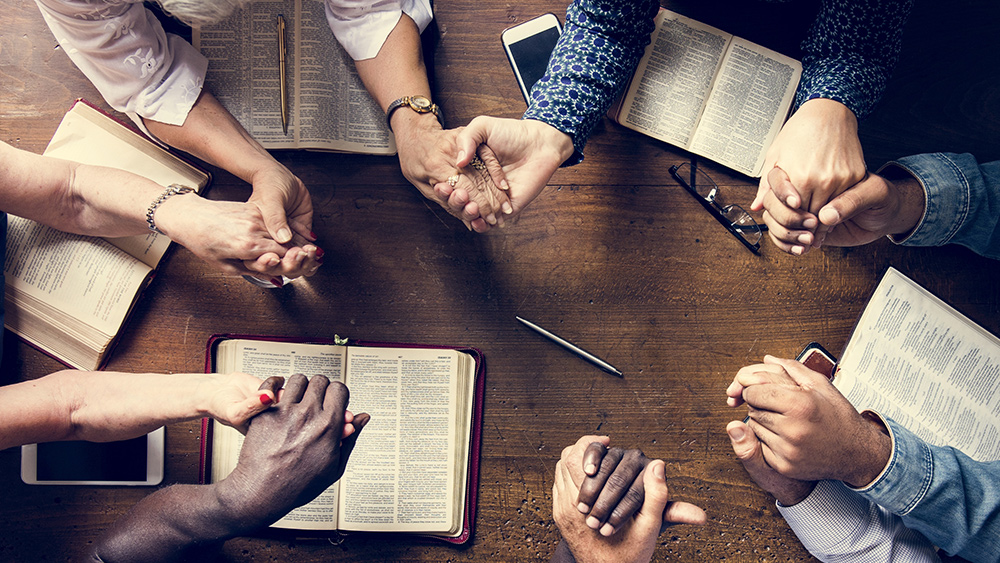Teaching your kids about emergency preparedness is as easy as ABC
01/06/2023 / By Olivia Cook

Empowering your children does not have to be difficult. You can actually teach kids about emergency preparedness by simply playing an alphabet game.
Below, you will find some prepping suggestions listed from A to Z that can help you and your family in emergency situations. Have some fun with your kids and see who can come up with the most prepping items that correspond with each letter they pick.
A – Awareness
Playing games with your children is a great way to teach situational awareness in a fun and age-appropriate way. It is a teachable and learnable skill and by teaching your children how to be aware of their surroundings, you can boost their confidence and enhance personal safety in the process.
B – Baking soda
One of the most overlooked essential items, baking soda is one of the most inexpensive, non-toxic and best all-around must-haves in your survival pantry. It can be used in recipes as a leavening agent, in cleaning products, for personal hygiene (deodorant, soap, shampoo, toothpaste), medicinally (as an antacid, mouth cleaning and plaque removal) and the list goes on.
C – Clothing
Everyone’s go-bags must contain enough clothing essentials to last for a minimum of three days that you can vacuum seal in bags to cut the amount of space it takes up in your bag by half (if not more), depending on what you pack, including socks and underwear and survival jackets
D – Duct tape
You can’t have too many rolls of this lifesaver that have a variety of survival uses from building a temporary shelter to fixing screens or mosquito nets, cracked water bottles, broken poles and many more.
E – Entertainment
Plan to have a supply of no-tech amusements for you and your family, including books, board games, coloring books, crayons, playing cards, puzzle books or other similar things to keep everyone busy.
F – Food
Include easy-to-eat foods like beef jerky, homemade energy bars, nuts, freeze-dried fruits and meal pouches and other foods that you and your family like because eating unappetizing food is a morale-killer when everyone is already under pressure.
G – Garbage bags
Heavy-duty garbage bags that come in extremely large sizes can be used to secure campsite garbage from bears, as an emergency poncho in a rainstorm and as temporary shelter from the elements.
H – Hand tools
These will include kitchen tools (manual can openers), general handyman tools (hammers, screwdrivers, bolt cutters, crowbars and/or pry bars, hand saws, pliers, tape measure) and essential consumables (nails, screws, glue).
I – In Case of Emergency (ICE) contact information
Must-have contact information of family members, close friends, out-of-town relations, school, workplace, etc. as part of your family emergency communication plan that can be printed and laminated in wallet-sized copies or entered into mobile phones.
J – Jacks and other simple lifting tools
Toe jacks (or floor jacks) act like your typical car jack, but some have a swivel feature that allows you to position the equipment more precisely. You can also consider lift buddies and/or lifting straps (or moving harnesses) that are lightweight, compact and absolutely portable. These take pressure off your back and help even the weight distribution and provide better stability.
K – Knives
A knife is capable of serving as a multipurpose tool in the field or a last-ditch but vicious close-quarters weapon, says Mira J. Ross at Survival Sullivan, and there are many kinds to choose from, such as a tactical 6-inch folding knife, an emergency medical service (EMS) for first responder knife and so many others.
L – Light
Have spare flashlights/torches (with rechargeable batteries), oil lamps, lanterns and candles in your bedroom, kitchen, garage and close to your electrical panels because a lack of emergency lighting when you need one is a horrible experience.
M – Money
Keep some extra cash on hand to make sure you’ll be able to buy any last-minute essentials even if the power goes out and ATMs and credit card machines are down.
N – Notepad and writing tools
Also often overlooked, the notepad and writing tools are extremely important to have when you need to map out an area, write directions, write notes, take down addresses or contact information or simply draw pictures.
O – Over-the-counter meds and other medical survival supplies
In addition to the usual first aid supplies (disinfectants, antimicrobials), include over-the-counter meds (antidiarrheals, anti-allergies), bug repellants, sunscreens, personal protective equipment (masks, gloves, eye protection), patient assessment tools (thermometers, stethoscopes, blood pressure cuff, micropulse oximeter), trauma supplies (various dressings) and others.
P – Power banks and phone chargers
An emergency and practical backup option is a hand crank phone charger, but it will take a lot of effort if you want constant power.
Q – Quick reference guides
Include maps (topographic maps, trail maps, detailed road maps for navigation), a first aid manual (as a guide for certain scenarios when traditional medical care is not readily available), field guides and plant identification books.
R – Radio
A hand-cranked radio that receives the standard AM/FM signals as well as National Oceanic and Atmospheric Administration weather channels will provide you with the necessary resources to keep you safe whether you’re out of service range, out of power or dealing with any unforeseen event.
S – Sprouting seeds
Having a selection of seeds and sprouting supplies is a great part of your survival strategy. Sprouting seeds will provide you and your family with complete nutrition.
T – Tarps
Nothing beats tarpaulins if you’re camping or bugging outdoors. You can use a tarp to collect water and you can use that same tarp as an emergency tent or shelter. You can also use a tarp as insulation from the ground in a shelter made from natural materials.
U – UHMWPE braided cord and other types of cordage
The ultra-high molecular weight polyethylene (UHMWPE) fiber rope is an amazing survival tool that you can use where heavy lifting is required. You can also get the popular all-around, general use paracord, twine and other types of cordage that have an “infinite” number of uses.
V – Vet pet emergency kit
Make sure your pet go-bag can fit food, water, medication and other miscellaneous pet care items, including identification tags, paw protectors, waste bags, etc.
W – Water and water filters
Plan on having at least one gallon of clean water on hand per person per day for both hydration needs and sanitation. Consider using portable water filtering systems, like the LifeStraw, which are small, packable and lightweight.
X – “Xtras”
This could include other items like whistles to call for help, weapons like firearms and ammo, sanitation and hygiene (bucket toilets), portable stoves, other camping/outdoor essentials (blankets, sleeping bags) and anything else that you should have in your emergency preparedness stash.
Y – Yard cart
Yard carts, wheelbarrows and the like can help you haul and transport rocks and stones, bricks, firewood, soil, debris, tools and so much more. (Related: Low-tech transportation tools for the prepper: Do you have a wagon, wheelbarrow or yard cart.)
Z – Zip lock bags and dry bags
Different-sized ziplock bags, durable, easy-to-carry and 100 percent waterproof dry bags and other waterproof containers could keep your valuable possessions (money, important documents and potential barter items) safe and dry.
Teaching your children emergency preparedness can be a daunting task, but you can get down to their level and try to make things as simple as possible to build up their knowledge and confidence.
Watch this video to learn about Every Day Carry (EDC) items.
This video is from the Black Swamp Prepping channel on Brighteon.com.
More related stories:
These 10 items will come in handy to survive an imminent urban collapse.
Prepping and air travel: Items for a TSA-approved BOB.
Prepping inventory: Which items are the right ones to overstock?
Sources include:
Submit a correction >>
Tagged Under:
alphabet game, barter items, bug out, emergency preparedness, gear, homeschooling, homesteading, preparedness, prepper, prepping, survival, survival essentials, survival gear, tips
This article may contain statements that reflect the opinion of the author
RECENT NEWS & ARTICLES
COPYRIGHT © 2017 HOMESCHOOLING NEWS




















